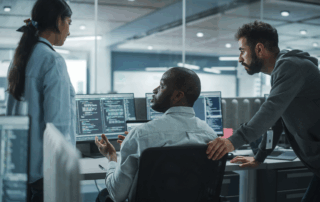Keeping U In Mind
Did You Know?
The National Academic Press (2001) wrote that on an annual basis, musculoskeletal disorders accounted for nearly 70 million physician office visits in the US. It also stated that in 1999, almost a million workers required time away from work for treatment or recovery related to musculoskeletal disorders. Why is this important? As our economy grows and job market demand increases, employers must consider how job tasks are affecting their staff. Although technology has made the workplace more efficient and convenient for workers, there are still basic tasks that involve pulling, pushing, and lifting that pose a risk to organizations. If not properly considered, companies may be placing undue burdens on themselves, including but not limited to, injured workers, lost productivity, lost wages, and other incurred fees. Liberty Mutual estimates the cost associated with MSD’s to be around $13.4 billion every year. Can you afford not to manage this risk properly?
Where To Start
Here are some basic best practices to consider. In addition, an INSURICA representative can also direct you to best in class solutions and help identify gaps in your program.
- Train workers in the latest ergonomic practices to reduce the chances of injury related to stepping, handling, and lifting.
- Click Here to get your step-by-step Guide to Creating An Ergonomics Program provided by INSURICA.
- Perform Fit-for-Work testing, which focuses on screening potential employees and identifying possible risk factors that may contribute to a musculoskeletal disorder.
- Have a good return-to-work program for your employees. Return-to-work can have a significant impact on your EMOD, which in turn effects the cost of insurance.
- Design the workplace to fit the employee, adjust workstations where feasible, and provide mechanical lifting aids when possible.
- Develop company policies that address lifting tasks, what size, what weight. Look for ways to address repetitive activities.
- Ensure your workers compensation policy is right for your business. Talk to an expert!
Talk to a professional risk management provider that can identify gaps and exposures in your workplace and insurance policy.
About the Author
Share This Story
Related Blogs
OSHA Announces Top 10 Violations for 2025
OSHA recently revealed its top 10 most frequently cited standards in the 2025 fiscal year using preliminary data. This information is valuable for businesses of all kinds, as it helps them identify common exposures that affect their workforce and gives them the information they need to plan their compliance programs.
Cyber Hygiene for Schools: Teaching Digital Safety to Students
Cyber hygiene for schools is more important than ever in today’s digital learning environment. Teaching digital safety to students not only protects their personal information but also strengthens overall school cybersecurity. With increasing online access in classrooms, cyber hygiene for schools must become a routine part of curriculum planning and student behavior expectations.
Mental Health Benefits Go Mainstream: What Employers Need to Know
Once considered a niche offering or a reactive add-on, mental health benefits have now moved to the center of the employee experience. In 2025, nearly half of U.S. employers offer some form of mental health support beyond traditional EAPs—a sharp rise from just 30% in 2023. This shift isn’t just cultural; it’s strategic.









